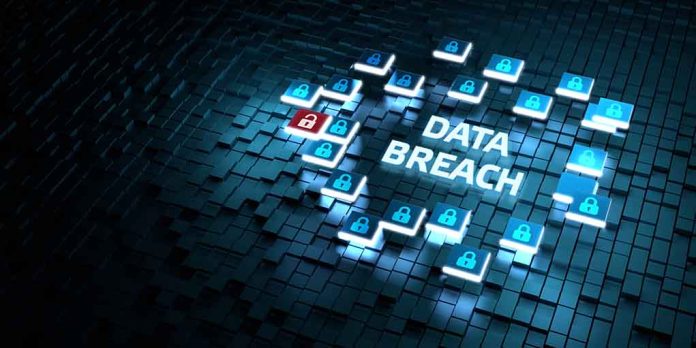
Millions of Americans are facing potential identity theft after a massive data breach exposed their personal information to cybercriminals.
At a Glance
- A data breach at FBCS has exposed the personal information of over 3 million Americans.
- Exposed data includes Social Security numbers, full names, and driver’s license numbers.
- The breach increases the risk of phishing, identity theft, and social engineering attacks.
- FBCS has implemented additional security measures and is offering two years of free credit monitoring.
The Breach at Financial Business and Consumer Solutions (FBCS)
A data breach at Financial Business and Consumer Solutions (FBCS) has exposed the personal information of over 3 million Americans. This breach occurred on Valentine’s Day, but FBCS discovered it on February 26 and notified affected individuals and authorities in late April. The exposed data includes full names, Social Security numbers, dates of birth, and drivers’ license or ID card numbers.
This breach increases the risks of identity theft, phishing, and other social engineering attacks. Given the sensitivity of the exposed data, cybercriminals can inflict significant financial and personal harm. FBCS is offering 24 months of free credit monitoring and identity restoration services to those affected. Additionally, they have implemented new security measures to prevent future occurrences.
Lessons from Previous Data Breaches
Data breaches are not new. In September 2017, Equifax announced a breach affecting 148 million Americans. The compromised data included names, addresses, phone numbers, Social Security numbers, and driver’s license numbers. This breach was due to an unpatched vulnerability in Apache Struts, a web application framework. The U.S. government indicted four members of China’s military for hacking Equifax.
Equifax agreed to a settlement of up to $700 million, which included $425 million for affected consumers and a $100 million civil fine. These incidents underline the significance of maintaining current software patches and investing in robust cybersecurity measures.
A Constant Threat: HealthEquity Data Breach
HealthEquity also experienced a breach that affected over 4.3 million Americans. The breach occurred due to compromised credentials from a partner, which led to the theft of sensitive health data. The information exposed in this breach includes full names, addresses, phone numbers, employer and employee IDs, and Social Security numbers.
“We discovered some unauthorized access to and potential disclosure of protected health information and/or personally identifiable information stored in an unstructured data repository outside our core systems. On June 26, 2024, after validating the data, we unfortunately determined that some of your personal information was involved.” FoxNews
HealthEquity has arranged for two years of free credit identity monitoring, insurance, and restoration services for those impacted. The rapid response and transparency provided by HealthEquity are steps in the right direction, showcasing the importance of being prepared for such breaches.
The social security number of every American may have been compromised in a massive cybersecurity breach that could threaten the identity of all citizens.https://t.co/Jm1D1qgB7I
— Entrepreneur (@Entrepreneur) August 14, 2024
The Growing Cost of Cybercrime
Data breaches and cyberattacks are expensive. The global economy lost nearly USD 1 trillion to cybercrime in 2020, a 50% increase since 2018. The average cyber insurance claims rose from USD 145,000 in 2019 to USD 359,000 in 2020. This upward trend stresses the need for better cyber information sources, standardized databases, mandatory reporting, and greater public awareness.
“Open data can support cyber insurers in sustainable product development and risk-adjusted pricing,” emphasizes recent research on the economic impact of cybercrime.
As cyber vulnerabilities pose significant risks, including business interruptions and financial losses, stakeholders must prioritize cybersecurity. This includes investing in preventative measures and awareness programs to mitigate the risks associated with cyber threats.
Sources
- https://www.foxnews.com/tech/massive-data-breach-exposes-over-3-million-americans-personal-information-cybercriminals
- https://www.cnn.com/2023/06/16/politics/cyberattack-us-government/index.html
- https://archive.epic.org/privacy/data-breach/equifax/
- https://www.foxnews.com/tech/4-3-million-americans-exposed-massive-health-savings-account-data-breach
- https://www.ncbi.nlm.nih.gov/pmc/articles/PMC8853293/
- https://www.sciencedirect.com/science/article/pii/S0268401223001007
- https://www.hipaajournal.com/healthcare-data-breach-statistics/
- https://nordvpn.com/blog/biggest-data-breaches/
- https://www.csoonline.com/article/534628/the-biggest-data-breaches-of-the-21st-century.html










